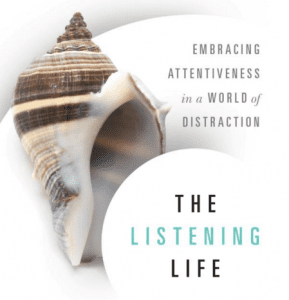 This review is by Drew J. Strait, who reviews Anathea Portier-Young, Apocalypse Against Empire: Theologies of Resistance in Early Judaism (Grand Rapids: Eerdmans, 2011).
This review is by Drew J. Strait, who reviews Anathea Portier-Young, Apocalypse Against Empire: Theologies of Resistance in Early Judaism (Grand Rapids: Eerdmans, 2011).
In recent years, Biblical scholarship has experienced a proliferation of anti-imperial readings of the Bible. Some would even say that a veritable “anti-imperial Paul coalition” exists among New Testament scholars. This movement has been shaped by the rise of post-colonial theory in the 1990’s, along with a resurgence of interest into the impact of empire(s) and ruler cults on the self-understanding of early Jewish and Christian faith communities. I write as an Anabaptist—a theological movement that is, in my mind, inherently anti-imperial—yet I also write as a student of history. As with all popular movements in Biblical scholarship, a time comes when we must double-check our sources, theories and, dare I say it, tendenices toward reading our own political and imperial experiences into the Biblical narrative.
In comes Anathea-Portier Young’s new book: Apocalypse Against Empire: Theologies of Resistance in Early Judaism (Eerdmans, 2011). Young’s book is timely, contributing the most sophisticated assessment of early Judaism and empire to date. The work of Steven Friesen and others has shown the robustly anti-imperial nature of John’s Apocalypse in the New Testament. But what can we say about other Jewish apocalypses that preceded the composition of John’s Apocalypse? Was Jewish apocalyptic a genre of politically charged resistance literature from its inception? What is the relationship between apocalypse and empire? Young sets out to answer these questions by evaluating three early Jewish apocalypses, all written, according to Young’s assessment, under the terror and domination of the Seleucid Empire (200-130s BCE). Contrary to the popular notion that apocalyptic represents a flight away from reality and suffering, Portier-Young argues that apocalyptic visionaries urged public confrontation of their persecutors through a message of faithfulness and hope (p. xxii). It should be said from the outset that this book is not for the faint of heart; it demands much from the reader. In fact, I read it with the Dictionary of Early Judaism in one hand and the Apocrypha/Pseudepigrapha in the other so as to double-check sources and background. Even so, for those who put their hand to the plow and don’t look back, Portier-Young’s book will provide an immense source of learning.
The book is carefully structured, with three parts: (1) theories of empire and resistance; (2) historical background of Seleucid domination and terror in Judea; and (3) a detailed exegetical study of three Jewish historical apocalypses: Daniel, the Apocalypse of Weeks and the Book of Dreams. Chapter One opens with a technical discussion of theories of resistance, hegemony and domination. James C. Scott’s popular theory of domination and resistance among New Testament scholars is discussed in detail; unlike other scholars who employ Scott’s theory, however, Portier-Young does not accept all of Scott’s conclusions without reservation (cf. Richard Horsley, Bridgitte Kahl and Warren Carter). For example, Scott argues that communities dominated by empire voiced their dissent offstage through “hidden transcripts” of anonymous speech such as rumor, gossip and encoded songs of resistance. Portier-Young argues that Scott’s theory of hidden transcripts creates a false dualism between the hidden world of resistance (experienced in the mind) and the visible world of domination (experienced in the body). As Portier-Young sees it, apocalypses call the community of God to embody their message of resistance through both mind (belief) and body (praxis) by characterizing the invisible power structures of empire demonic and monstrous (35) while simultaneously appealing to the equally invisible, yet powerful reality of God’s superior authority (37). For Portier-Young, then, the pseudonymity of apocalypses is not an attempt to preserve anonymity (the hidden transcript) or protect the author from political persecution; rather, pseudonymity functions to root the anti-imperial message in the authority of God embedded in creation and Jewish ancestral traditions. While Portier-Young’s discusson on theory is interesting, I found it a bit tedious and, even then, it is still only “theory.” I think most readers will want to take Portier-Young’s advice to “read the conclusion to chapter one and proceed to Parts Two and Three” (xxii).
Part Two is broken into five chapters detailing the history of Judea from Hellenistic rule under Alexander the Great to the Maccabean revolt under the Seleucid King Antiochus IV. The aim of this section is to identify the political stressors, objects and conditions that apocalyptic was resisting. Chapter 2 begins with Alexander the Great’s death and the subsequent “distress over the earth” (1 Macc 1:8) caused by his successors’ rise to power. Contrary to the popular notion that Judea experienced a time of peace during this period, Portier-Young shows that Judea experienced a time of endless violence between the Seleucids and the Ptolemies who fought no less than six Syrian wars between 274-168 BCE. Portier-Young chronicles the strategic ways Alexander’s successors perpetuated a “royal-military ideology” by transforming civic space through military conquest, imperial coins, statues, architecture and ruler cults. After the fifth Syrian war in 200 BCE—when the Seleucids took back control of Jerusalem from the Ptolemies—the Seleucid King Antiochus III issued a programma that gave the Judeans control over issues of purity within the the city of Jersualem. Antiochus III’s programma allowed for peaceful coexistence between the Judeans and Seleucids, yet the Judeans’ autonomy was rooted in the authority of the Seleucid King rather than Yhwh (62). The Judeans experienced stressors during this period that set the stage for revolt including lack of “political autonomy, imperial exploitation, military occupation, rapid political change, the ravages of war, personal and economic hardship, internal divison, and unequal distribution of privilege” (73). All of these stressors set the stage for the emergence of apocalyptic.
In chapter 3, Portier-Young focuses on the period between 188-173BCE. Two key events during this period intensified the animosity between Judeans and the Seleucid Empire. The first event occured during the aftermath of Rome’s defeat of the Seleucid King Antiochus III in 190BCE, which forced the Seleucids to “identify new sources of revenue within the boundaries of their own empire” (80). This led the Seleucids to adopt new economic policies that gave them jurisdiction over regional temple treasuries, including the temple in Jerusalem. Portier-Young then analyzes the Seleucids’ attempt to extract money from the Jerusalem temple treasury through a certain royal aid named Heliodorus (2 Macc 3:1-4:6). Through a careful analysis of the recently published Heliodorus stele in conversation with 2 Maccabees, Portier-Young shows that Heliodorus was not attempting an arbitrary imperial robbery but, rather, the implementation of a well thought out imperial policy of lucrative economic exploitation. Though the Heliodorus event is typically interpreted as being historically insignificant among scholars (80), Portier-Young shows that it indicates one piece of a large puzzle of shifting political and economic factors that helped stimulate the Jewish revolt.
The second event of significance during this period was the Jewish high priest Jason’s hellenizing reforms in Judea and his introduction of the profoundly Greek gymnasium to life in Jerusalem. Aside from the gymnasium, Jason’s reforms introduced into Jerusalem “new hierarchies, a school of virtues, and principles of order that had no apparent connection to the cosmic order established by Israel’s God…” (97). The disorder Jason’s reforms caused is exemplified by Jewish male wrestlers who, when participating in nude wrestling matches in the gymnasium, made artificial foreskins to cover the shame their Jewish circumcision caused them (1 Macc 1:15). Though Jason’s Hellenizing reforms undermined Jewish ancestral traditions, Portier-Young aims to show that “there was no programmatic, empire-wide attempt to replace local traditions with Greek ones” (105). In other words, Hellenization was a highly complex process, often perpetuated by local elites rather than the Seleucid King himself (e.g., Jason’s reforms).
In chapter 4 Portier-Young evaluates Antiochus’s re-conquest of Judea after his retreat from Egypt during the Sixth Syrian war (170-168 BE). When Antiochus recognized that he would never defeat the Roman or Ptolemaic Empires, he turned back to re-conquer his own provincial subjects (137). The brief Jewish civil war between Jason and the high priest Menelaus created the opportunity for Antiochus to “assert and solidify Seleucid control of Judea” (136). Upon Antiochus’ return to Jerusalem he slaughtered 40,000 Judeans and took another 40,000 into slavery making them “captives of the spear” (1 Macc 5:11-14). Aside from terrorizing the Judeans with violence, Portier-Young aims to show that Antiochus was following a well calculated logic of state terror: namely, to decreate Judea’s autonomy and then recreate it under Aniochus’s own sovereignty and benefaction.
In Chapter 5, Portier-Young employs theories of trauma and terror to clarify the logic of Antiochus’s program of terror through massacre, abduction, home invasion, plunder of the temple and displays of military might. Antiochus’s ban against the practice of Jewish religion in Judea in 167BCE, called the Edict of Antiochus, is discussed in Chapter 6, where Portier-Young evaluates the edict through the books of Daniel and First and Second Maccabees. Portier-Young interprets the Edict of Antiochus as an attempt to erase Jewish identity through the forced violation of “sacred time and space and the boundaries between holy and unholy” in Jewish ancestral tradition (204). For example, Antiochus outlawed sacrifice, circumcision, possession of scrolls of Torah and forced the Judeans to violate sabbath and dietary laws. To add insult to injury, Antiochus forced the Judeans to celebrate his birthday with sacrifices as a calendrical festival—thus, both sacred space and time were reoriented away from Jewish ancestral tradition toward the new King on the block. Antiochus’s assault upon the Judean’s mind and body, and sense of sacred space and time, created the context and conditions that gave birth to apocalyptic as resistance literature.
The above historical reconstruction sets the stage for Part Three, where Portier-Young shows how Jewish apocalypses resisted Antiochus’s empire. Chapter 7 argues that the Book of Daniel resists the Edict of Antiochus through an alternative vision of reality where Yhwh is King and Antiochus is not. Portier-Young argues that Daniel is written by a group of wise teachers who are calling the Judeans to a life of prayer, fasting, penitence, teaching and preaching, and covenant faithfulness even in the face of death. These embodied disciplines are exemplified by Daniel, Shadrak, Meshak and Abednego who serve as a paragon of faithful resistance. Even in the face of death, they “defy the king’s edict, refuse to worship any God but Yhwh, proclaim their faith out loud and in public, and surrender their bodies to death, not to apostasy” (261). The most valuable part of this section is Portier-Young’s argument that Daniel’s alternative vision of faithful witness is rooted in the prophetic story of Israel. By evoking echoes and reinterpretations of Jeremiah’s seventy-year prophecy and the suffering servant poem of Isaiah, the wise teachers create an eschatogical timetable for the end of Antiochus’s empire and a model for faithful witness.
The final chapters of Part Three enter into an area of early Judaism that is less traveled by seminary students: the world of Enochic Judaism. Though it is not yet common to interpret Enochic literature anti-imperially, Portier-Young argues that this body of literature counters the discourse of Antiochus’s empire by rooting its authority in the unique status of Enoch—”who walked with God”—during Israel’s primeval history (Gen 5:24). The seventeen verses that make up the Apocalypse of Weeks (93:1-17) create an alternative vision of a future just economy, future temple, and the coming kingdom of the Great One (345). Contrary to Daniel’s call for non-violent witness, the audience of the Apocalypse of Weeks is invited to wield the sword when God executes judgment on the wicked. Enoch’s vision of a future just world woud speak loudly to Judeans living under the domination of Antiochus.
The Enochic Book of Dreams (1 En 83-90), written between 165-160BCE, concludes Portier-Young’s discussion on apocalyptic theologies of resistance. Through Enoch’s first-person account of two dreams, Enoch calls readers to resist the Edict of Antiochus with prayers, prophetic preaching and with open warfare. Enoch’s second dream-vision, called the Animal Apocalypse, depicts the people of God as apostate sheep “whose eyes have been pecked out by those who rule them” (90:2). Portier-Young argues that the Animal Apocalypse resists the hegemony of Antiochus by depicting a group of lambs led by Judas Maccabeus whose job is to restore the sight of the apostate sheep. Israel’s sacred ancestral leaders—especially Elijah, Moses and Joshua—provide the lambs with a model for crying out, calling Israel to repent and to fight idolatry with arms. The idea of open eyes, according to Portier-Young, captures a shared theme in all three apocalypses that encourages the Judeans to see beyond their present suffering to the reality of God’s just future.
Apocalypse Against Empire sets a new high water mark for anti-imperial readings. Simply put: it is theoretically and historically sophisticated. John Collins goes so far as to say in the foreward that “not since the early work of Martin Hengel have we seen such a thick description of Seleucid history and politics in the context of biblical scholarship” (xii). And I agree. I found Part Two to be the most valuable part of the book. But perhaps the greatest contribution of this study is its clearly argued thesis that the terror and domination of the Seleucid empire contributed to the emergence of apocalyptic. By carefully reconstructing the political, economic and hegemonic stressors that dominated and terrorized the Judeans, Portier-Young achieves what many anti-imperial interpreters do not: namely, a reading that is not historically embellished. Still, the degree with which the apocalypses are targeting empire alone will need to be further assessed by experts in early Judaism. For example, what other stressors contributed to the emergence of apocalyptic? I am especially wondering here how intra-Jewish conflicts may have contributed to the anxiety of life in Judea. Moreover, how does Portier-Young’s thesis hold up in light of other extant apocalypses written after the Seleucid empire? This study is sure to inspire many fascinating questions for future doctoral students to pursue.
Anathea Portier-Young has established herself as one of the most exciting up and coming North American scholars in early Judaism. Her study will benefit both seasoned scholars and eager seminary students. I also think the pastor-theologians in our midst will benefit from this book: in an age of continued empires, how do we empower the community of God to non-violent witness, covenant faithfulness and hope? I hope these questions capture the imaginations of pastor-theologians who can help us carve out the language and tools necessary for living out God’s future just world in the here and now.











